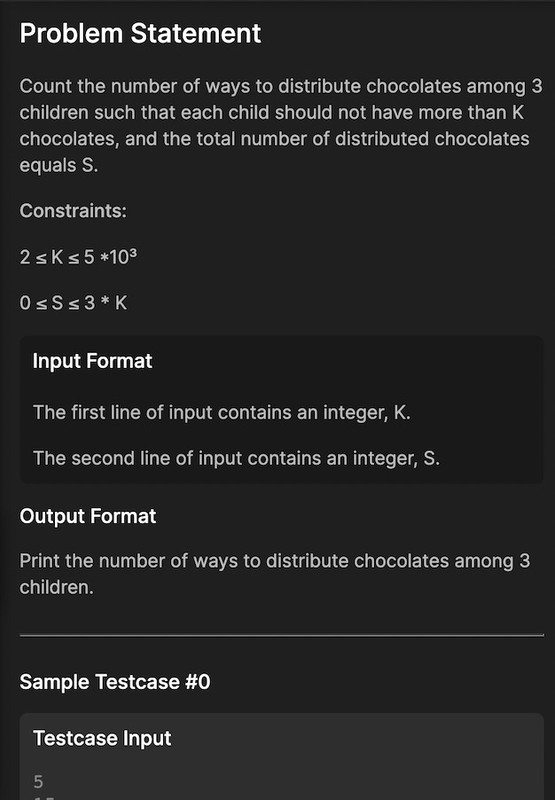Loading Similar Posts
Entering edit mode
Approach
We can simulate the whole process by brute force. First we allot the i candies to the first child, then out of remaining s-i candies we allot j to the second child. Now if the number of candies left are less than or equal to K we can allot the remaining candies to the third child and we get a valid allotment.Otherwise we get an invalid allotment.
Time Complexity - O(K^2)
Pseudocode
ll ans=0;
for(ll i(0);i<=min(s,k);++i){ // alloting to first child
for(ll j(0);j<=min(k,s-i);++j){ // alloting to second child
ans+=(k>=(s-i-j)); // checking if the allotment is valid
}
}
return ans;
Entering edit mode
//DP solution
#include <bits/stdc++.h>
using namespace std;
int t[3][50001];
int solve(int k,int s,int i)
{
if(i>=3)
{
if(s==0) return 1;
return 0;
}
int ans=0;
if(t[i][s]!=-1) return t[i][s];
for(int x=0;x<=k;x++)
{
ans+=solve(k,s-x,i+1);
}
return t[i][s]=ans;
}
int main() {
int k,s;
cin>>k>>s;
memset(t,-1,sizeof(t));
cout<

 Join Us
Join Us
